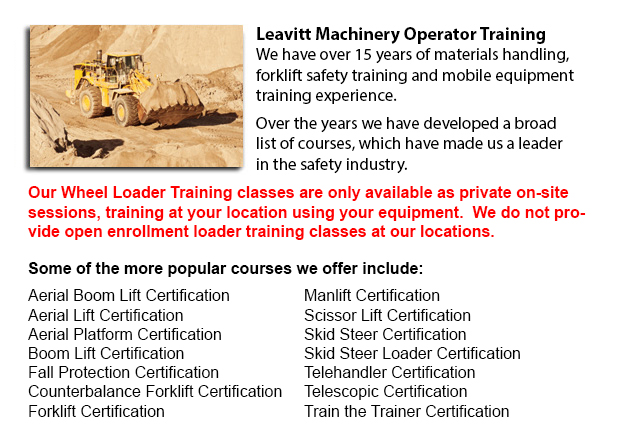
Lift trucks are obtainable in a variety of various models that have various load capacities. The majority of typical forklifts used in warehouse environment have load capacities of one to five tons. Bigger scale units are used for heavier loads, like loading shipping containers, can have up to 50 tons lift capacity.
The operator could make use of a control to be able to raise and lower the blades, which can likewise be called "tines or blades". The operator of the forklift could tilt the mast to be able to compensate for a heavy loads propensity to tilt the forks downward. Tilt provides an ability to operate on rough ground as well. There are yearly contests for skilled lift truck operators to contend in timed challenges and obstacle courses at local forklift rodeo events.
General utilization
All forklifts are rated for safety. There is a particular load maximum and a specific forward center of gravity. This vital info is supplied by the manufacturer and placed on the nameplate. It is vital cargo do not go beyond these specifications. It is illegal in many jurisdictions to tamper with or take out the nameplate without obtaining permission from the lift truck manufacturer.
Nearly all forklifts have rear-wheel steering so as to improve maneuverability. This is specifically helpful within confined areas and tight cornering areas. This particular kind of steering differs quite a bit from a driver's initial experience together with various motor vehicles. Since there is no caster action while steering, it is no necessary to utilize steering force so as to maintain a constant rate of turn.
Instability is another unique characteristic of forklift utilization. A continuously varying centre of gravity happens with every movement of the load amid the forklift and the load and they have to be considered a unit during utilization. A lift truck with a raised load has centrifugal and gravitational forces which can converge to result in a disastrous tipping mishap. In order to avoid this possibility, a lift truck should never negotiate a turn at speed with its load raised.
Lift trucks are carefully designed with a particular load limit meant for the tines with the limit lowering with undercutting of the load. This means that the freight does not butt against the fork "L" and will decrease with the rise of the fork. Usually, a loading plate to consult for loading reference is placed on the forklift. It is dangerous to utilize a forklift as a personnel hoist without first fitting it with specific safety tools like for example a "cage" or "cherry picker."
Lift truck use in distribution centers and warehouses
Vital for every distribution center or warehouse, the forklift must have a safe setting in which to accommodate their efficient and safe movement. With Drive-In/Drive-Thru Racking, a lift truck should travel inside a storage bay which is multiple pallet positions deep to set down or take a pallet. Operators are normally guided into the bay through rails on the floor and the pallet is positioned on cantilevered arms or rails. These confined manoeuvres require skillful operators to be able to complete the job efficiently and safely. For the reason that every pallet requires the truck to enter the storage structure, damage done here is more frequent than with other kinds of storage. When designing a drive-in system, considering the size of the blade truck, as well as overall width and mast width, have to be well thought out in order to be certain all aspects of a safe and effective storage facility.
-
Prince Albert Forklift Training Courses
Prince Albert Forklift Training Courses - When forklift operator safety training is tailored for illiteracy, training time is lessened by 50 percent. Lift-truck operator driver safety training evaluation, train the trainer and forklift training certi... More -
Prince Albert Heavy Equipment Training
Prince Albert Heavy Equipment Training - The two most common kinds of heavy equipment training are classed into the categories of equipment; equipment which is fashioned with rubber tires or those with tracks. The tracked vehicle are heavy duty machi... More -
Prince Albert Order Picker License
Prince Albert Order Picker License - Order preparation operation or order picking as it is more usually known is a method utilized within warehouse operations and comprises staff called order pickers. The order picker's duty is to take and collect ar... More -
Operator Safety Training, Re-Qualification Training, In-House Instructor Training in Prince Albert
Used in nearly all warehouse operations, boat yards or industrial construction sites, the lift truck is a very important part to be able to help raise and transfer cargo. The reach feature of a lift truck can help improve the applications which the f... More -
Prince Albert Overhead Crane Certification
Prince Albert Overhead Crane Certification - The overhead crane training certification program is designed to be effective with all those participating regardless of language or literacy restrictions. The course has two parts: a practical training se... More -
Prince Albert Heavy Equipment Training Programs
Prince Albert Heavy Equipment Training Programs - There are different types of equipment that are ready to be utilized at any given time on a construction site. These equipment require mechanics to be able to complete the maintenance tasks, operators... More -
Prince Albert Crane Operator Certification
Prince Albert Crane Operator Certification - The process to allow individuals to operate specific kinds of cranes is to take crane operator certification training to be given certification. The certification process consists of classroom learning, ha... More -
Prince Albert Crane Safety Training
Prince Albert Crane Safety Training - Both crane driver as well as their employers should know all the possible issues associated to the use of an overhead crane. All over North America, there is legislation that provides regulation for the safe oper... More

Forklift Certification Prince Albert
TOLL FREE: 1-888-254-6157
Prince Albert, Saskatchewan
forkliftcertificationprincealbert.com
Email Us
About Us


